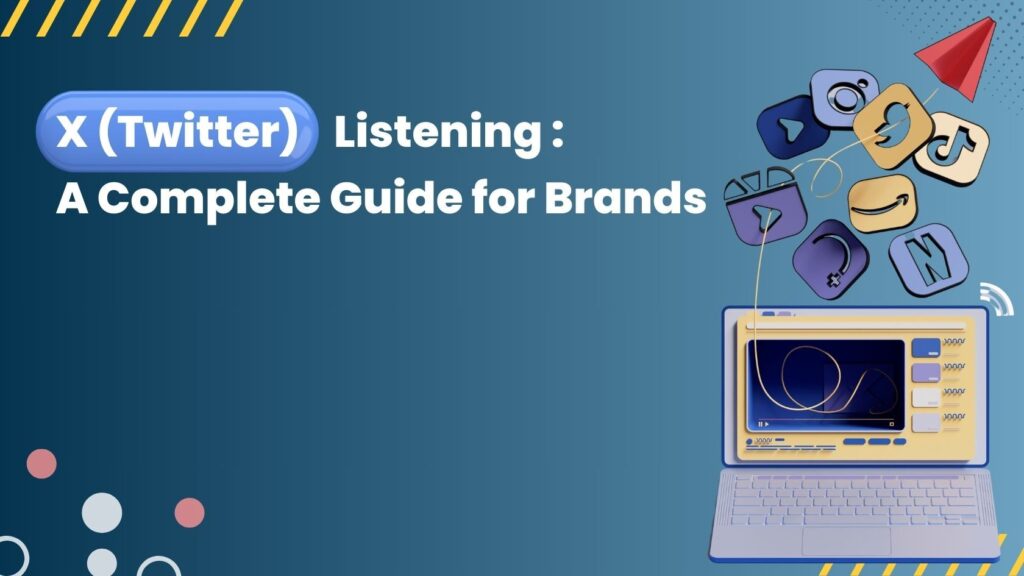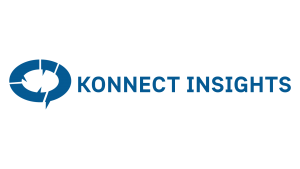In today’s digital age, social media platforms have become powerful tools for brands to connect with their audience. Among these platforms, Twitter stands out as a hub of real-time conversations and valuable insights. However, with millions of tweets being sent every day, it can be overwhelming for brands to keep up with the constant stream of information. This is where social listening for Twitter comes in.
Social listening on Twitter refers to the practice of monitoring and analyzing the conversations happening on the platform to gain valuable insights about customers, competitors, and industry trends. By leveraging social listening tools and strategies, brands can stay ahead of the curve, identify opportunities for engagement, track sentiment around their brand, and make data-driven decisions.
In this complete guide for brands, we will explore what social listening for Twitter is all about, how it works, and the benefits it offers, and provide a step-by-step approach to how to implement it successfully. So let’s dive in!
What is Social Listening for Twitter?
Social listening for Twitter involves monitoring and analyzing conversations happening on the platform in real time. According to Twitter, 50% of consumers talk about brands when sharing life updates, and 34% actually want to thank the brand. It allows brands to tap into the wealth of user-generated content and extract valuable insights from it. By understanding what people are saying about their brand, products, competitors, or industry as a whole, brands can make informed decisions and tailor their marketing strategies accordingly.
Unlike merely tracking mentions or replies to your brand’s handle or hashtags, social listening goes beyond that. It involves monitoring broader conversations that mention relevant keywords or hashtags related to your industry or target audience. By doing so, brands can gain a comprehensive understanding of customer sentiment towards their brand as well as identify emerging trends or issues that need attention.
How Does Social Listening for Twitter Work?
Social listening for Twitter relies on advanced technology and analytics tools to gather data from the platform in real time. These tools use algorithms and machine learning techniques to scan tweets based on specific keywords or hashtags chosen by the brand. The data collected is then processed and analyzed to provide valuable insights.
The process involves four key steps:
1. Data Collection
Social listening tools continuously monitor Twitter for relevant conversations based on keywords, hashtags, or user handles specified by the brand. The tools can also filter out noise and irrelevant content to focus on what matters most.
2. Data Processing
Once the data is collected, it goes through a processing stage where it is cleaned and organized. This ensures that the analysis is based on accurate and meaningful information.
3. Sentiment Analysis
Social listening tools use natural language processing algorithms to analyze the sentiment behind each tweet. This allows brands to gauge whether the sentiment towards their brand or specific topics is positive, negative, or neutral.
4. Insights Generation
Finally, the processed data is transformed into actionable insights using visualizations, reports, and dashboards. This enables brands to understand customer preferences, identify emerging trends, track competitor activities, and make data-driven decisions.
By leveraging these advanced techniques, brands can gain a deeper understanding of their audience and industry landscape through Twitter conversations.
5 Benefits of Implementing Social Listening on Twitter
Implementing social listening on Twitter offers numerous benefits for brands seeking to enhance their online presence and drive business growth. Let’s explore five key advantages:
1. Real-Time Customer Insights
By monitoring conversations happening on Twitter in real-time, brands can gain immediate insights into customer preferences, opinions, and sentiments towards their products or services. This allows them to respond promptly to customer needs and concerns, delivering better customer experiences.
For example, imagine a consumer tweets about having a negative experience with a certain brand’s product. Through social listening, the brand can identify this tweet quickly and address the issue by reaching out to the customer directly, offering a solution or apology publicly. This not only resolves the individual’s problem but also demonstrates responsiveness to other potential customers who might come across the conversation.
2. Competitor Analysis
Social listening on Twitter enables brands to monitor and analyze conversations related to their competitors. With competitor analysis, By tracking mentions, sentiment, and trending topics surrounding competitors, brands can identify gaps in the market, spot opportunities for differentiation, and stay ahead of industry trends.
For instance, a brand might notice a surge in negative sentiment towards one of its competitors due to a product issue. Leveraging this insight, the brand can craft targeted marketing campaigns highlighting its own product’s superiority with regards to the identified problem.
3. Brand Reputation Management
Twitter is an open platform where people often share their experiences and opinions about brands. With reputation management By actively monitoring conversations mentioning their brand, brands can protect and manage their online reputation effectively.
In case of any negative sentiment or customer dissatisfaction, brands can address the issues promptly and publicly to showcase their commitment to customer satisfaction. This not only helps in resolving individual problems but also demonstrates transparency and accountability, building trust among customers and potential buyers.
4. Identifying Influencers
Social listening allows brands to identify influential users within their target audience who regularly engage in discussions related to their industry or products. These influencers can play a crucial role in spreading positive word-of-mouth about the brand or even collaborating on influencer marketing campaigns.
By building relationships with these influential users through engagement and personalized outreach, brands can amplify their reach and improve brand advocacy among relevant communities.
5. Staying Abreast of Industry Trends
Twitter is a treasure trove of real-time information where trends emerge rapidly. By monitoring industry-specific keywords or hashtags, brands can quickly identify emerging trends or topics that are gaining traction among their target audience.
This insight can be leveraged to create timely content or adapt marketing strategies accordingly. For example, if an e-commerce brand notices a surge in tweets discussing sustainable fashion, they could develop a marketing campaign around eco-friendly products to cater to this growing trend.
By harnessing these benefits of social listening on Twitter, brands can make informed decisions, optimize their marketing efforts, and genuinely connect with their audience.
How to Do Social Listening on Twitter?
Implementing social listening on Twitter involves a strategic approach that encompasses several key steps. Let’s walk through each step in detail:
Define Your Objective
Before you start, it’s essential to define your objective for social listening on Twitter. What specific insights are you hoping to gain? Are you primarily interested in monitoring sentiment toward your brand, tracking industry trends, or identifying potential influencers? Defining clear objectives will guide your strategy and ensure focused efforts.
Select the Best Listening Tools
There are several social listening tools available in the market that can help streamline and automate the process. When choosing a tool, consider factors such as data accuracy, real-time monitoring capabilities, sentiment analysis features, user-friendly interfaces, and pricing options.
Some popular social listening tools for Twitter include Brandwatch Consumer Research, Sprout Social, Hootsuite Insights, Mention, and Talkwalker. Assess the features and functionalities offered by each tool and choose the one that aligns best with your objectives and budget.
Select Relevant Keywords and Hashtags
To effectively monitor conversations on Twitter that are relevant to your brand or industry, it’s crucial to select appropriate keywords and hashtags. These can include your brand name, product names, industry-specific terms, or phrases related to customer pain points or emerging trends.
For example, if you’re a skincare brand targeting customers concerned about acne issues, keywords like “acne treatment,” “clear skin,” or hashtags like ” skincare” would be relevant for your monitoring purposes.
Monitor Brand Mentions and Sentiment
Once you’ve defined your keywords and hashtags, set up alerts or notifications within your chosen social listening tool to monitor brand mentions in real time. This will enable you to stay on top of conversations happening around your brand and identify any positive or negative sentiment.
Additionally, keep an eye out for mentions of your competitors, industry influencers, or trending topics to ensure you have a comprehensive understanding of the broader landscape.
Engage and Track
Social listening is not just about passively monitoring conversations; it also involves active engagement. When you come across tweets that mention your brand or relevant topics, take the opportunity to engage with users by replying, offering assistance, or sharing relevant content.
This not only helps in building relationships with your target audience but also allows you to track the impact of your engagement efforts. Monitor how users respond to your interactions and analyze the effectiveness of your engagement strategies.
Analyze the Data
As social listening tools gather data from Twitter conversations, it’s crucial to allocate time and resources for data analysis. Dive into the insights provided by your chosen tool and identify patterns, trends, and actionable takeaways.
emerging trends, or capitalize on positive sentiment. Regularly review and update your strategy based on the insights gathered through social listening.
By following these steps and integrating social listening into their Twitter strategy effectively, brands can unlock valuable insights that drive growth and meaningful connections with their audience.
Twitter Listening Best Tools
When it comes to social listening on Twitter, several tools can help brands streamline their efforts and gain valuable insights.
Konnect insights as a platform provides holistic listening capabilities across social media and web channels.
Conclusion
Social listening on Twitter presents an invaluable opportunity for brands to tap into real-time conversations and gain meaningful insights about their audience, competitors, and industry trends. By implementing social listening strategies effectively, brands can enhance their online presence, improve customer experiences, protect their reputation, identify influencers, and stay ahead of the curve.
By defining objectives upfront, selecting the right tools, monitoring relevant keywords and hashtags, actively engaging in conversations, analyzing data regularly, and leveraging the best-in-class tools available in the market like Brandwatch Consumer Research or Sprout Social, brands can unlock a wealth of insights that drive strategic decision-making and foster strong connections with customers in today’s digital landscape.
So embrace the power of social listening on Twitter to elevate your brand’s social media strategy and gain a competitive edge in the ever-evolving digital world.






























